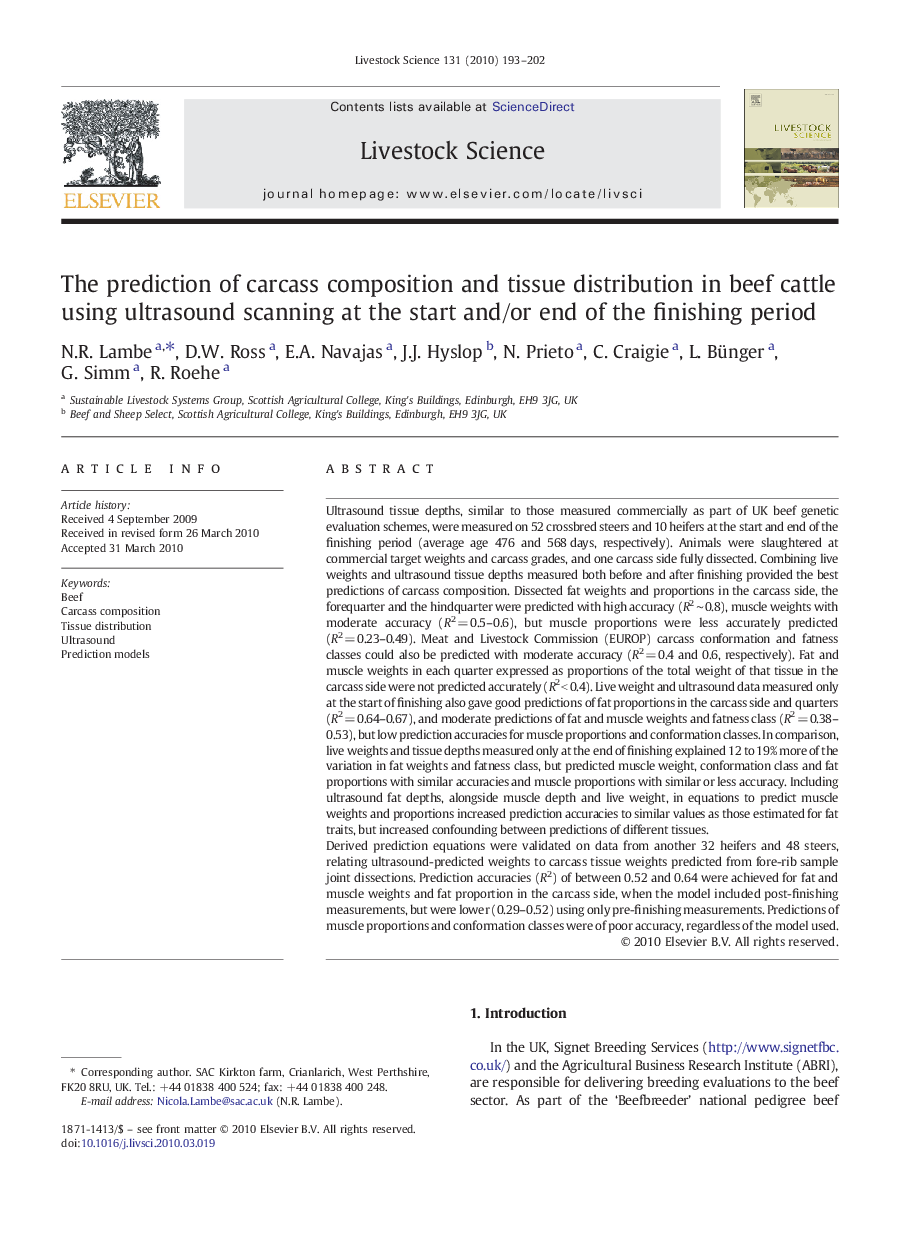| کد مقاله | کد نشریه | سال انتشار | مقاله انگلیسی | نسخه تمام متن |
|---|---|---|---|---|
| 2447818 | 1554001 | 2010 | 10 صفحه PDF | دانلود رایگان |

Ultrasound tissue depths, similar to those measured commercially as part of UK beef genetic evaluation schemes, were measured on 52 crossbred steers and 10 heifers at the start and end of the finishing period (average age 476 and 568 days, respectively). Animals were slaughtered at commercial target weights and carcass grades, and one carcass side fully dissected. Combining live weights and ultrasound tissue depths measured both before and after finishing provided the best predictions of carcass composition. Dissected fat weights and proportions in the carcass side, the forequarter and the hindquarter were predicted with high accuracy (R2 ∼ 0.8), muscle weights with moderate accuracy (R2 = 0.5–0.6), but muscle proportions were less accurately predicted (R2 = 0.23–0.49). Meat and Livestock Commission (EUROP) carcass conformation and fatness classes could also be predicted with moderate accuracy (R2 = 0.4 and 0.6, respectively). Fat and muscle weights in each quarter expressed as proportions of the total weight of that tissue in the carcass side were not predicted accurately (R2 < 0.4). Live weight and ultrasound data measured only at the start of finishing also gave good predictions of fat proportions in the carcass side and quarters (R2 = 0.64–0.67), and moderate predictions of fat and muscle weights and fatness class (R2 = 0.38–0.53), but low prediction accuracies for muscle proportions and conformation classes. In comparison, live weights and tissue depths measured only at the end of finishing explained 12 to 19% more of the variation in fat weights and fatness class, but predicted muscle weight, conformation class and fat proportions with similar accuracies and muscle proportions with similar or less accuracy. Including ultrasound fat depths, alongside muscle depth and live weight, in equations to predict muscle weights and proportions increased prediction accuracies to similar values as those estimated for fat traits, but increased confounding between predictions of different tissues.Derived prediction equations were validated on data from another 32 heifers and 48 steers, relating ultrasound-predicted weights to carcass tissue weights predicted from fore-rib sample joint dissections. Prediction accuracies (R2) of between 0.52 and 0.64 were achieved for fat and muscle weights and fat proportion in the carcass side, when the model included post-finishing measurements, but were lower (0.29–0.52) using only pre-finishing measurements. Predictions of muscle proportions and conformation classes were of poor accuracy, regardless of the model used.
Journal: Livestock Science - Volume 131, Issues 2–3, July 2010, Pages 193–202